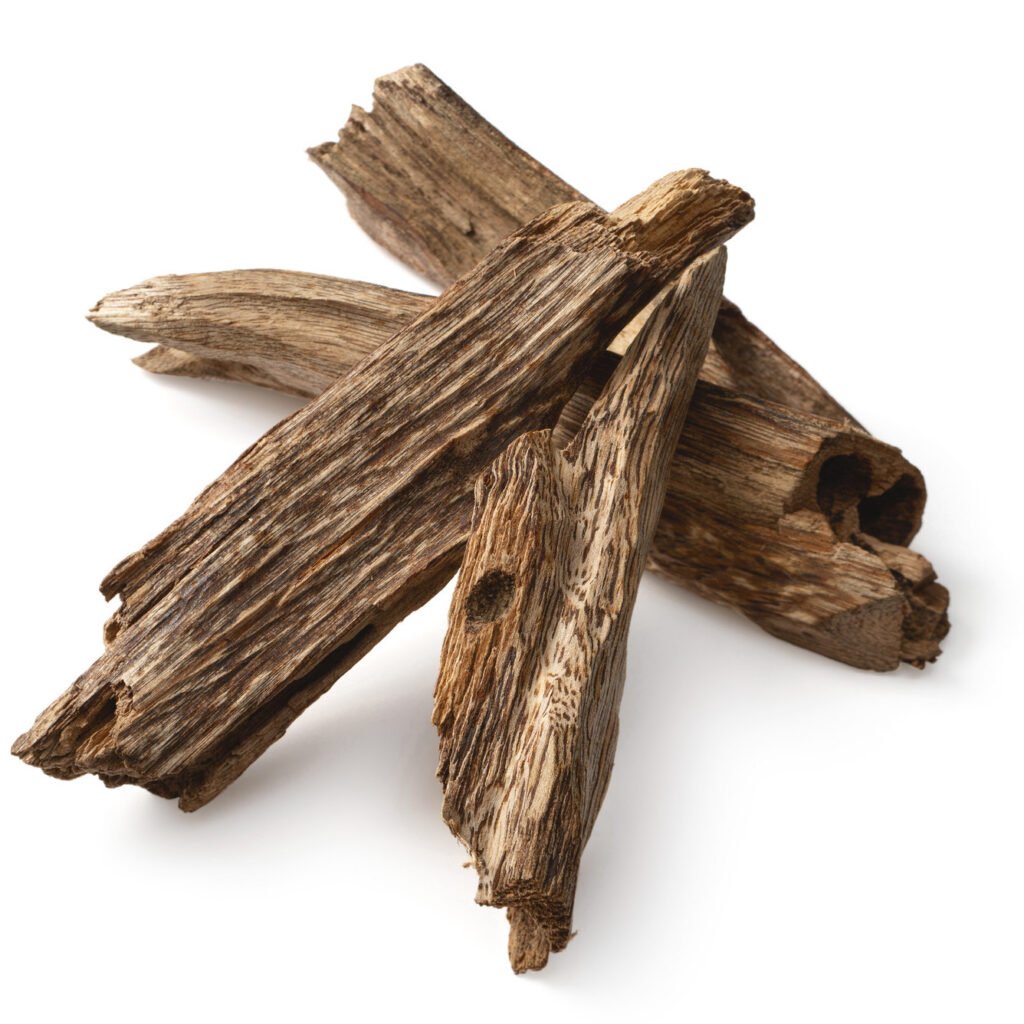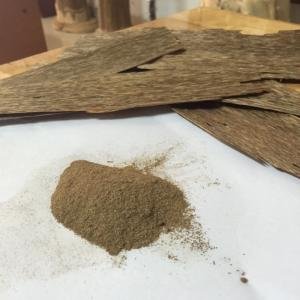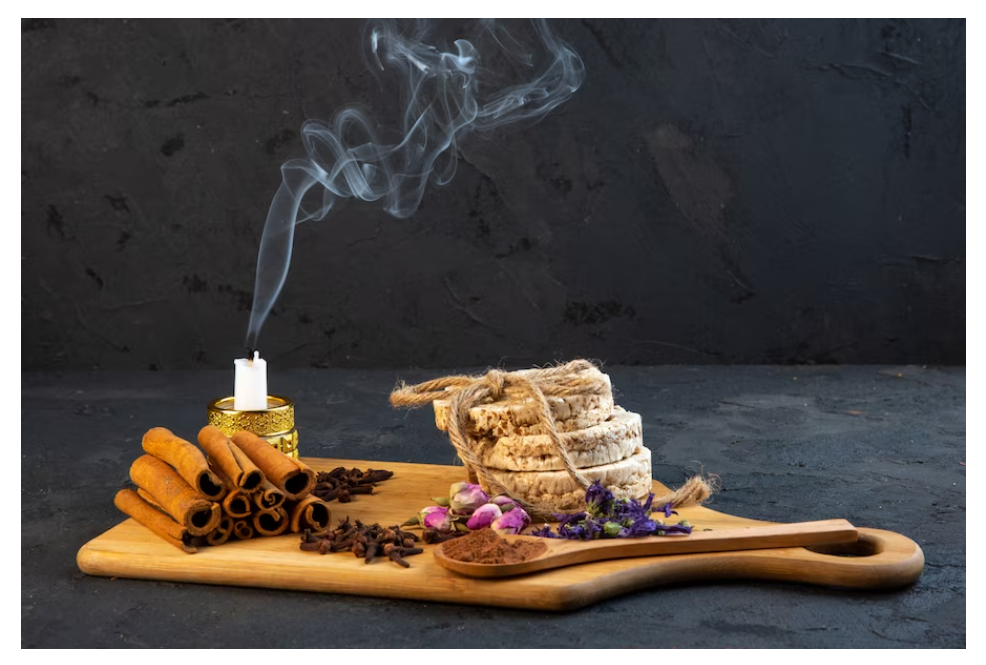Agarwood is a precious wood found in Aquilaria trees’ core, highly valued and rare. It’s often mentioned in Google Scholar studies.
Agarwood is admired for its rich scent and various uses. It originates from Southeast Asia and holds cultural, healing, and economic value. This resin has fascinated societies for ages, becoming part of customs, ceremonies, and high-end products.
Agarwood is unique. Its story is fascinating. Let’s explore why it’s special and its interesting history.
What is Agarwood?

Agarwood is a special substance found in certain trees. It’s resinous wood created in Aquilaria trees.
These magnificent trees, native to Southeast Asia, possess a unique defense mechanism. When attacked by fungi or borers, they release a fragrant resin into the heartwood. This resin-infused wood, with its captivating aroma, is what we call agarwood.
The resin itself, known as oud oil, is extracted from agarwood to create a highly prized essential oil used in perfumery.
However, the allure of agarwood extends beyond its enchanting scent. From incense and traditional medicines to intricate carvings and religious artifacts, agarwood products have captivated civilizations for centuries, as mentioned in texts like Sahih Muslim.
History and Origin of Agarwood

The history of agarwood dates back thousands of years. It has been referenced in ancient texts from South Asia, East Asia, and the Middle East, including mention of its significance in the United Arab Emirates.
In traditional Chinese medicine and religious ceremonies across cultures, agarwood was valued for its calming properties and spiritual significance.
The trade of agarwood flourished along the Silk Road, connecting Southeast Asian countries like Vietnam and Laos to markets in the Middle East, India, and beyond.
How is Agarwood Formed?

The formation of agarwood resin is a fascinating, albeit complex, process. It begins when an Aquilaria tree suffers an injury, often caused by a fungal infection or burrowing insects.
As the tree attempts to heal, it secretes a fragrant resin into the affected area. This resin, a complex cocktail of aromatic compounds, gradually impregnates the surrounding wood, transforming it from a pale, unscented material into the dark, fragrant treasure we know as agarwood.
The quality and fragrance of agarwood are influenced by several factors – the species of tree, the type of infection, and the duration of resin formation. It’s a slow and unpredictable process, with only a small percentage of Aquilaria trees actually producing agarwood.
The Role of Aquilaria Trees
Agarwood originates from trees belonging to the Aquilaria genus—most notably Aquilaria malaccensis and Aquilaria crassna.
Among the various species of Aquilaria, these trees thrive in natural forests across Southeast Asia, including regions like Papua New Guinea and Sri Lanka. However, not all Aquilaria trees produce agarwood; it forms only when the tree undergoes a specific transformation.
The Process of Infection and Resin Formation
When Aquilaria trees are wounded or infected by a fungal invasion (commonly from species like Phialophora), they produce a dark resin as a defense mechanism in the infected heartwood of Aquilaria species. Over time, this resin saturates the heartwood, turning it into the fragrant agarwood we know. This process can take years or even decades, making natural agarwood incredibly rare.
What Are The Uses Of Agarwood?

Perfumes and Fragrances
Agarwood oil, also known as oud oil, is one of the most expensive essential oils in the world. Its rich, woody scent with sweet undertones makes it a prized base note in high-end perfumes. The Middle East, particularly Saudi Arabia, is renowned for its love of oud-based fragrances.
Medicinal Applications
In traditional medicine systems like Ayurveda and traditional Chinese medicine, agarwood is used to treat various ailments, including infectious diseases. It is believed to have properties that alleviate stress, improve digestion, and reduce oxidative stress caused by free radicals.
Religious and Cultural Significance
Agarwood has deep spiritual roots. It is burned as incense during religious ceremonies in Hinduism, Buddhism, and Islam. In many cultures across Southeast Asia and the Middle East, agarwood chips are used to create a calming atmosphere during meditation or prayer.
Types of Agarwood

Natural Vs. Cultivated Agarwood
Natural agarwood forms in wild Aquilaria trees over decades but is increasingly rare due to overharvesting. Cultivated agarwood involves human intervention—such as fungal inoculation—to stimulate resin production in plantation-grown trees. Both types are valuable but differ in quality and price.
Regional Variations in Agarwood Quality
The quality of agarwood varies depending on its region of origin. For instance:
- Agarwood from Vietnam is known for its sweet aroma.
- Papua New Guinea produces agarwood with earthy notes.
- Indian varieties often possess a spicy scent profile.
How to Spot Real Agarwood?

Real agarwood is dense and dark because of its resin. It may feel oily or sticky.
The scent is earthy, sweet, and smoky when burned or made into oil, lasting for hours.
To confirm it’s genuine:
- Burn a small piece – real agarwood smells rich with little smoke.
- If buying processed versions, look for certificates to support ethical sourcing practices.
Why is Agarwood So Expensive?

The high value of agarwood can be attributed to a confluence of factors, chief among them its rarity and the labor-intensive process of producing this precious resin.
In the wild, only a tiny percentage of Aquilaria trees become infected and produce agarwood naturally, making it a rare and sought-after commodity. This scarcity, coupled with the ever-increasing global demand, has driven the price of natural agarwood to astronomical levels.
Moreover, the transformation of resinous wood into valuable products involves a complex and labor-intensive process.
From harvesting the infected trees and carefully extracting the resinous heartwood to distilling the fragrant oil and crafting intricate agarwood products, each step demands skilled craftsmanship and traditional knowledge passed down through generations.
This intricate process, combined with the rarity of the source material, contributes to the exceptional value placed on agarwood.
Rarity and Demand
The soaring price of agarwood is, in large part, a reflection of the basic principles of supply and high demand.
The demand for agarwood—driven by its use in perfumery, traditional medicine, and religious ceremonies—has skyrocketed in recent years, particularly in the Middle East and East Asia, where its cultural and religious significance is deeply rooted.
However, the supply of wild agarwood has dwindled drastically. Overharvesting, driven by its high value, has decimated natural populations of Aquilaria trees, pushing many species onto the endangered list. This scarcity, coupled with legal restrictions on trade in some species, has further fueled the price of natural agarwood and the interest in agarwood formation techniques.
Efforts to cultivate agarwood sustainably have helped to alleviate some of the pressure on wild populations, but the demand for this precious wood continues to outpace supply.
As long as this imbalance exists, and the allure of agarwood continues to captivate cultures around the world, its high price is likely to persist.
Labor-Intensive Production Process
The journey from a resin-infused tree to a finished agarwood product involves a surprisingly labor-intensive process, further explaining its hefty price tag, especially considering the amount of resin extracted.
Once an Aquilaria tree is harvested, often after decades of growth, skilled workers must painstakingly identify and extract the resinous heartwood, a task requiring years of experience and a keen eye.
The extracted agarwood then undergoes various processing methods depending on its intended use.
This could involve grinding it into powder for incense, chipping it for distillation to extract the precious oud oil, or carving it into intricate shapes for religious artifacts and decorative pieces.
The production of agarwood oil, in particular, is a time-consuming and intricate process. Traditional methods often involve steam distillation, requiring specialized knowledge and careful control of temperature and pressure to extract the pure and highly concentrated oud oil.
This meticulous process, combined with the rarity of the raw material, contributes to the high value of agarwood oil.
FAQ’s:
Can Agarwood Be Grown Everywhere?
While Aquilaria trees, the source of agarwood, are primarily found in Southeast Asia and New Guinea, their cultivation has expanded to other regions with suitable conditions. However, not all cultivated agarwood is of equal quality, and sustainable practices are crucial to protect this valuable species, listed under CITES Appendix II due to threats to wild populations.
What Are the Legal Aspects of Trading Agarwood?
International trade in agarwood is regulated under CITES (Convention on International Trade in Endangered Species of Wild Fauna and Flora) as many species, listed under Appendix II, face threats from overharvesting. Legal trade requires permits and adherence to strict regulations to ensure the sustainability of agarwood.
What does agarwood smell like?
Agarwood emits a rich, woody aroma with sweet and earthy undertones. Its fragrance is often described as complex, warm, and intoxicating, with hints of vanilla, spice, and musk. The scent varies depending on the type of agarwood and its quality.
Is agarwood sustainable?
Sustainable agarwood production involves planting Aquilaria trees on plantations and employing methods that induce resin production without harming the trees. This, combined with conservation efforts and responsible harvesting, is crucial to protect endangered species and ensure a sustainable future for agarwood.
How is agarwood harvested?
Traditional agarwood harvesting involves selectively cutting infected portions of mature Aquilaria trees, leaving the healthy parts intact to promote regeneration. The resinous wood is then carefully separated, producing agarwood chips, which undergo further processing.
Can agarwood be artificially produced?
While synthetic alternatives exist, true agarwood cannot be artificially produced. However, various methods, including fungal inoculation and chemical induction of chemical compounds, are employed to stimulate resin production in cultivated Aquilaria species, increasing agarwood yield.
What are the best regions for agarwood production?
Southeast Asia, particularly countries like Vietnam, Indonesia, and Thailand, are renowned for producing high-quality agarwood. However, East Asia, particularly certain regions of China, also contribute to agarwood production, each region boasting its own regional specialties.
Conclusion
Agarwood’s journey—from an unassuming tree in Southeast Asia to a globally treasured commodity—is nothing short of extraordinary. Its rarity stems from the delicate interplay between nature’s processes and human ingenuity through sustainable practices like cultivated production.
Whether cherished for its aromatic resin or revered for its cultural significance, agarwood remains an enduring symbol of luxury and spirituality—a true testament to nature’s wonders intertwined with human tradition.

